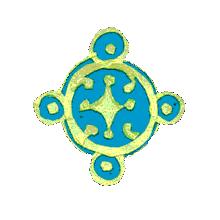|
THE EVOLUTION OF GENERATIVE CODES FROM PATTERN LANGUAGES AND SEQUENCES |
PATTERN LANGUAGES CAME FIRST, about 1967. There were many pattern languages of various kinds, published. Each pattern language contained a number of patterns, in a rough order going from the largest patterns to the smallest. The pattern language gave a descripiton of a certain kind of environment, by displaying the functional barebones, so that one could be sure that buildings or other environments would at least respond adequately, through their geometry, to the functional needs which were identified in the patterns.
|
| MORPHOGENETIC SEQUENCES, also known just as SEQUENCES CAME SECOND, about 1990. A sequence is a pattern language which places emphasis on the order of unfolding, and gives much more importance to the orderly unfolding, so that by applying the steps in the sequence, in the order specified, a coherent geometric order will unfold, which also contains the patterns and is therefore well behaved as an environment.
|
| GENERATIVE CODES CAME THIRD, and most recently, about 2002. A generative code includes all the information needed for practical implementation: thus it not only describes the order in which decisions must be made, to generate coherent form, but in addition describes all the human interactions, and practical and legal and procedural details, to get an actual living neighborhood to appear on the ground, as a result of interactions among the people who live and work there.
|
|
ALL THREE TYPES MAY BE VIEWED AS GENERATIVE SEQUENCES, but pattern languages and morphogenetic sequences, lack essential features of a generative code, and therefore cannot get the practical work done successfully. Human interactions, human relationships, and the roles people need to play together when building a neighborhood, are missing. Yet these are needed to form viable living structure.
|
| OF THE THREE TYPES, ONLY FULL GENERATIVE CODES GET FULLY SUCCESSFUL RESULTS |
Only the FULL generative codes are capable of helping a human community to steer themselves towards a living structure. Developers who follow the blueprint of behavior laid down in the second half of the 20th century, will not achieve a living structure. It cannot be done that way. If developers were to choose to use generative code, and to follow the demands placed on them by the generative code, that might work. And it is possible that a more serious examination of underlying processes is needed, in order for developers in any form, to succeed in building real community.
|
